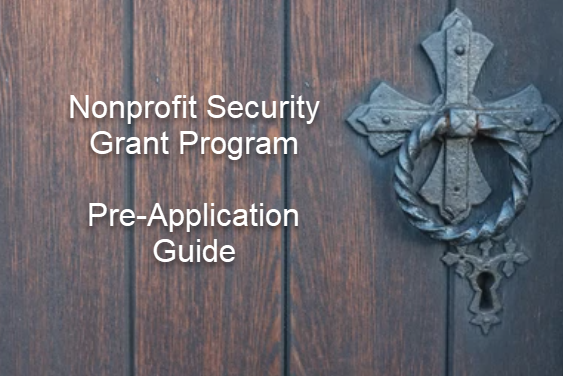




Purpose: The objective of the NSGP is to provide funding for physical and cyber security enhancements and other security-related activities to nonprofit organizations that are at high risk of a terrorist or extremist attack.
Terrorism: Any activity involving a criminally unlawful act that is dangerous to human life or potentially destructive of critical infrastructure or key resources, and that appears intended to intimidate or coerce a civilian population, to influence government policy by intimidation or coercion, or to affect the conduct of a government by mass destruction, assassination, or kidnapping.
Eligible organizations are:
Every organization exempt from federal income tax under Internal Revenue Code section 501(a) must file an annual information return except:
While FEMA requires only the UEI, Texas law requires all entities awarded funds through the SAA to maintain a full SAM registration throughout the period of the active grant.
SAM.gov is a federal system. The SAA is unable to assist with or resolve any complications with your organization’s SAM registration or UEI. Please visit the SAM.gov website for assistance.
SAM registrations do not have any associated costs. Any communication requesting payment for registration completion are likely fraudulent.

What type of entities/organizations are eligible to apply under NSGP?
The list below is not exhaustive and only provides examples of potential eligible organizations, all of which must be nonprofits.
|
|
What type of entities/organizations are not eligible to apply under NSGP?
|
|
NSGP-UA. Eligible nonprofit subapplicants located within UASI-designated high-risk urban areas may apply to the SAA to receive funding only under NSGP-UA.
Current designated UASIs
NSGP-S. Eligible nonprofit organization subapplicants located outside of UASI-designated high-risk urban areas may apply to the SAA to receive funding only under NSGP-S.
DHS/FEMA will verify that nonprofit sub-applicants have applied to the correct program and may disqualify the applications of nonprofit sub-applicants that apply to the wrong program.
Acronyms
Funding may be used for security or emergency planning expenses and the materials required to conduct planning activities. Planning must be related to the protection of the facility and the people within the facility and should include consideration of access and functional needs considerations as well as those with limited English proficiency.
Allowable costs are focused on target hardening and physical security enhancements. Funding can be used for the acquisition and installation of security equipment on real property (including buildings and improvements) owned or leased by the nonprofit organization, specifically in prevention of and/or protection against the risk of a terrorist attack. This equipment is limited to select items in the following two sections of items on the Authorized Equipment List (AEL):
In addition to the select items in Sections 14 and 15 listed above, the following equipment is also allowable:
Funding may be used to conduct security-related exercises. This includes costs related to:
Exercises afford organizations the opportunity to validate plans and procedures, evaluate capabilities, and assess progress toward meeting capability targets in a controlled, low risk setting.
Nonprofit organizations may use NSGP funds for the following training-related costs:
Allowable training topics are limited to the protection of critical infrastructure key resources, including physical and cybersecurity, target hardening, and terrorism awareness/employee preparedness.
See the Preparedness Grants Manual, page C-6 for more details.
M&A costs are for activities directly related to the management and administration of the award.
M&A expenses must be based on actual expenses or known contractual costs. Requests that are simple percentages of the award, without supporting justification, will not be allowed or considered for reimbursement.
M&A expenses may not exceed 5% of the total project costs.
M&A costs include the following categories of activities:
POST AWARD REQUIREMENT: All funded projects with equipment installation must undergo an EHP Review to ensure compliance with EHP laws and NEPA.
EHP: Environmental/Historic Preservation
Note: The EHP review and approval can be a multi-month approval process
NEPA: National Environmental Protection Act
Per the 2023 NSGP NOFO, both NSGP-UA and NSGP-S subapplicants may apply for up to $150,000 per site. PSO will let applicants know if this amount changes for FY 2024.
Nonprofit organization may request funding for up to three (3) separate sites for a maximum of $450,000.
Physical location of the site to be protected determines eligibility under NSGP-UA or NSGP-S
Requests for multiple sites must be submitted through multiple applications to the SAA. One site per application.
The NSGP does not have a match requirement
Applicants are encouraged to request the maximum amount for each site.
Nonprofit Organizations applying to the SAA will need to prepare three documents for each site:
Additional documentation needed include:
Organizations will also need to register in the federal System for Award Management (SAM) to secure a SAM UEI number. NOTE: There are no costs associated with SAM registration. Please be mindful for potential scams requesting payment to complete a SAM registration.
A mission statement is a formal summary of the aims and values of an organization. The three components of a mission statement include the purpose, values, and goals of the organization. The provided statement should discuss the “who, what, and why” of your organization.
A vulnerability assessment is used to identify and validate physical security deficiencies of your organization/facility and is the foundation of an NSGP application.
Currently there is no prescribed format or template for the assessment.
Vulnerability assessments can be provided in the form of a:
The vulnerably assessment involves looking inside the organization for internal vulnerabilities and weaknesses.
Projects/activities requested through the NSGP should align to mitigate items identified in the vulnerability assessment.
Tip: In preparation to describe how SGP grant funding will be used, nonprofit organizations should think broadly and holistically in their approach to security measures designed to protect buildings and safeguard people. Some physical security control examples include locks, gates, and guards (e.g., contract security). While these may be effective measures, there are many additional layers to physical security that can help, including creating comprehensive physical security plans, conducting training and exercises (e.g., active shooter and evacuation), identifying countermeasures against intrusion (e.g., access controls), preventing physical security breaches (e.g., security enhanced doors/windows), and reducing physical security threats (e.g., cameras/surveillance).